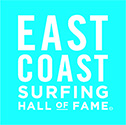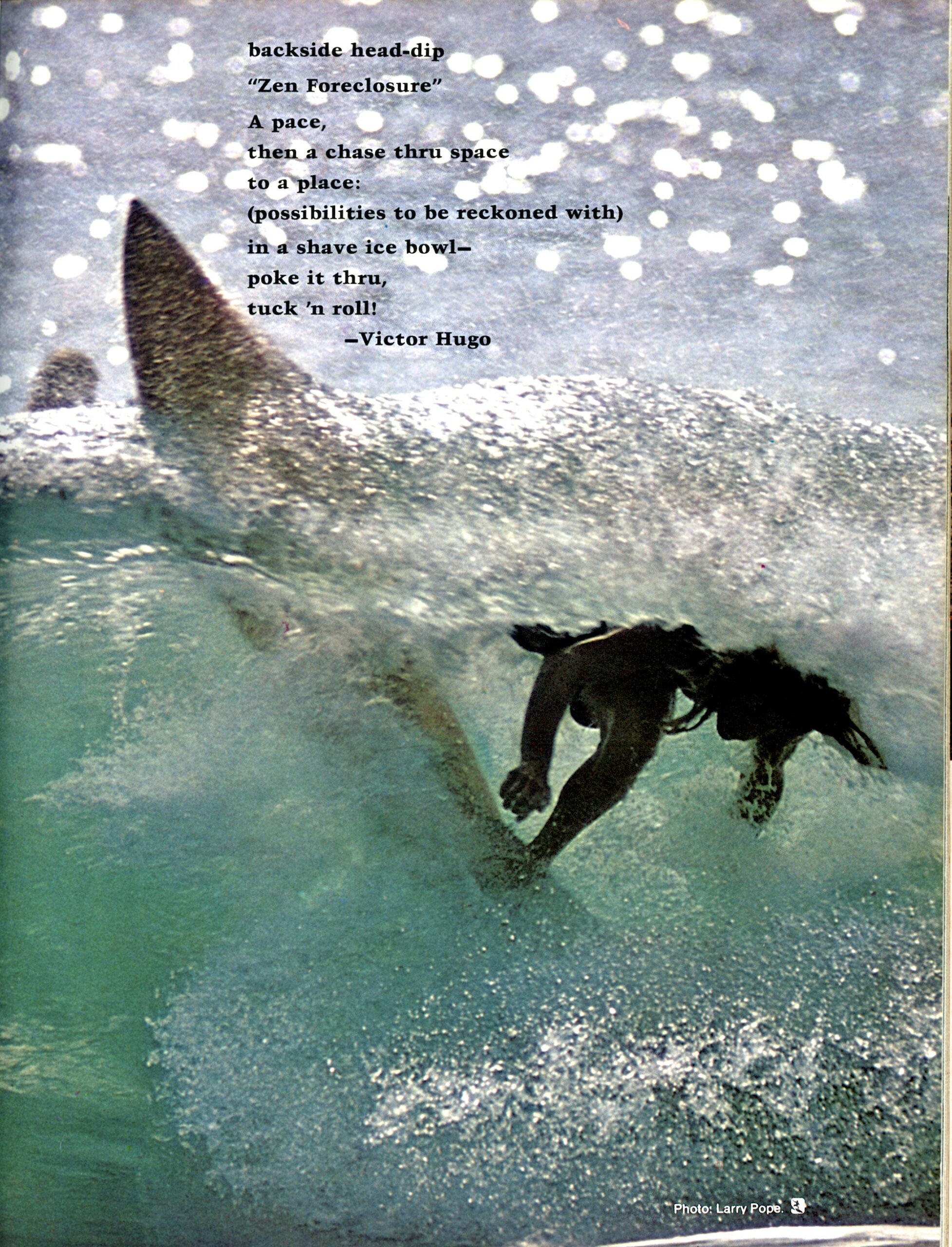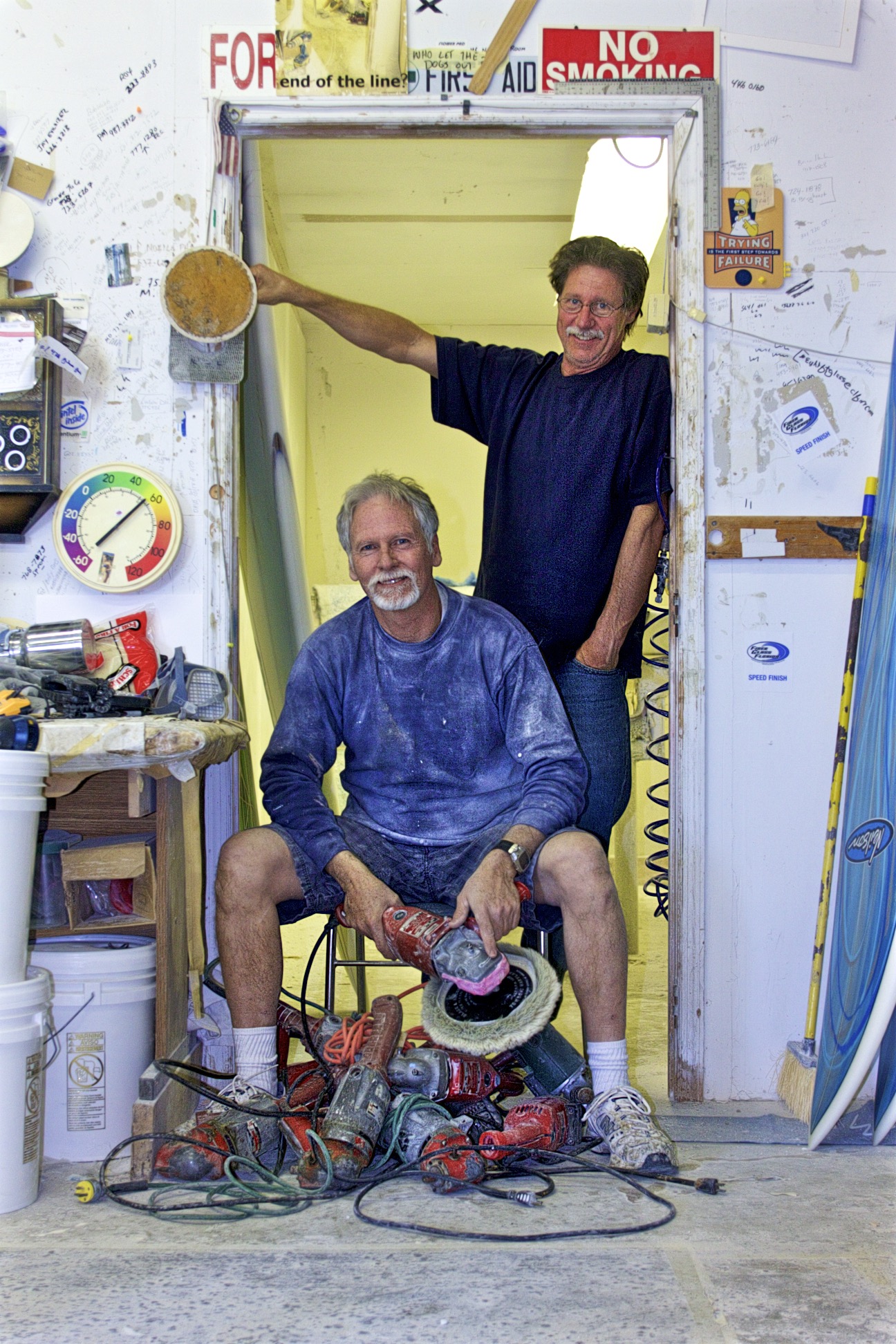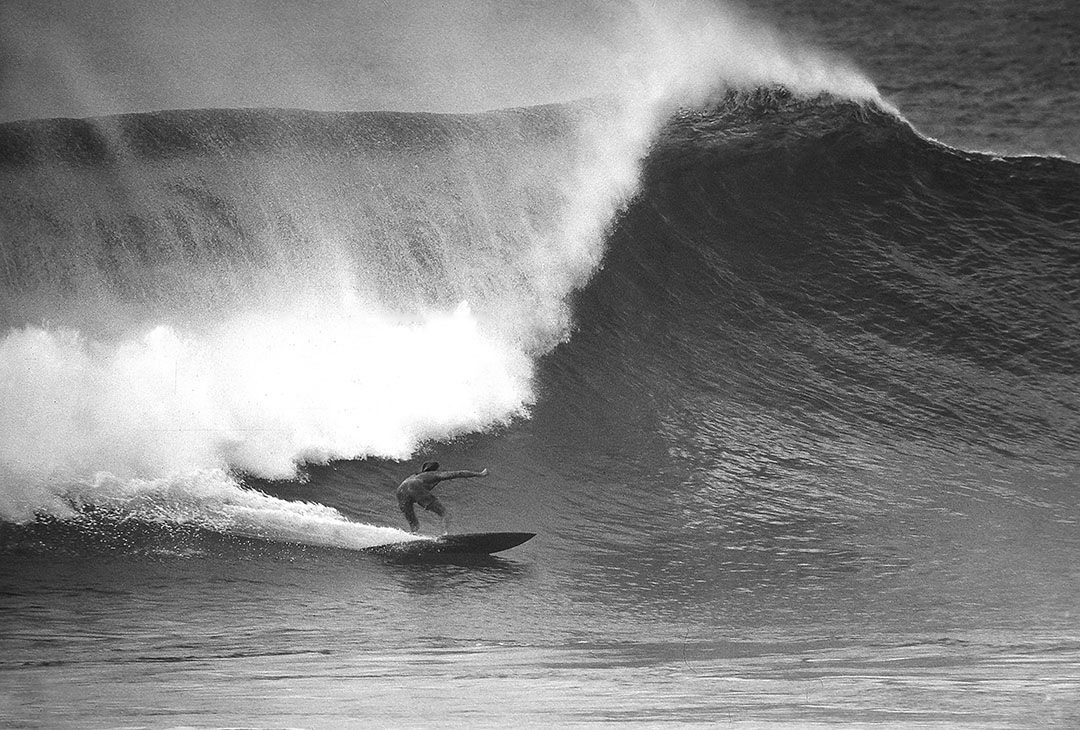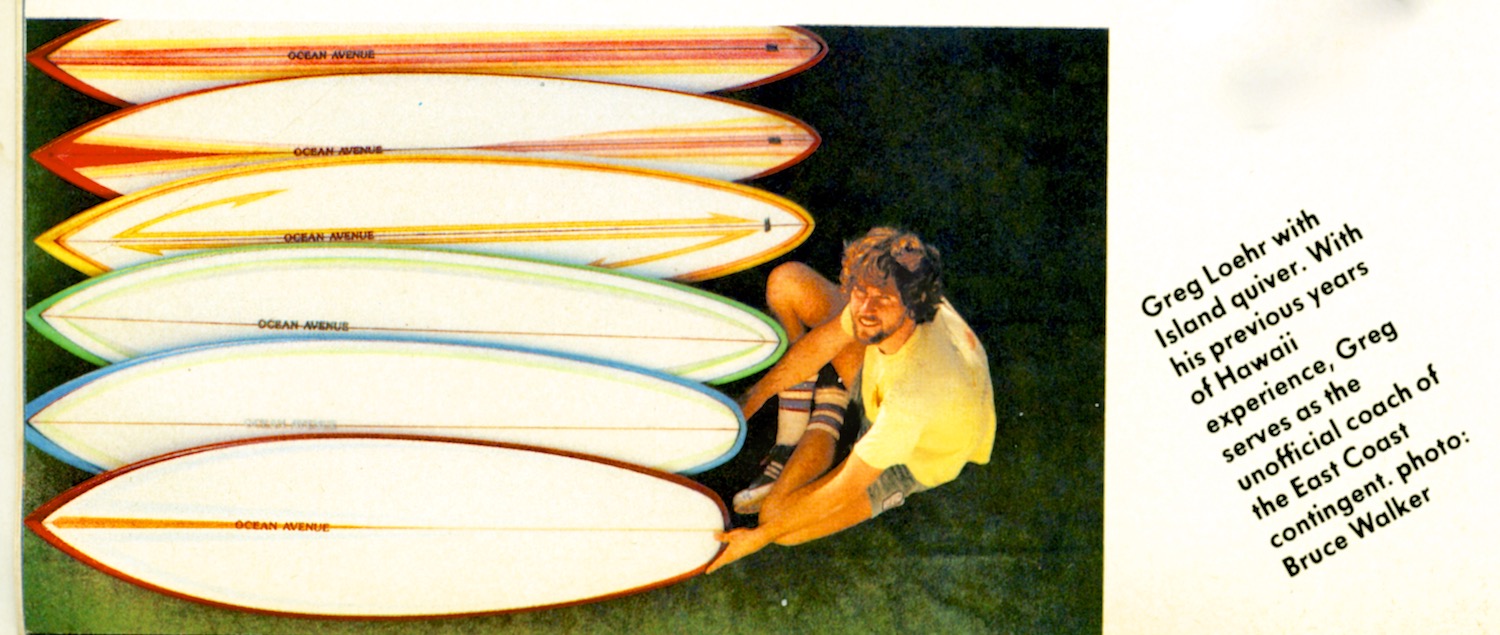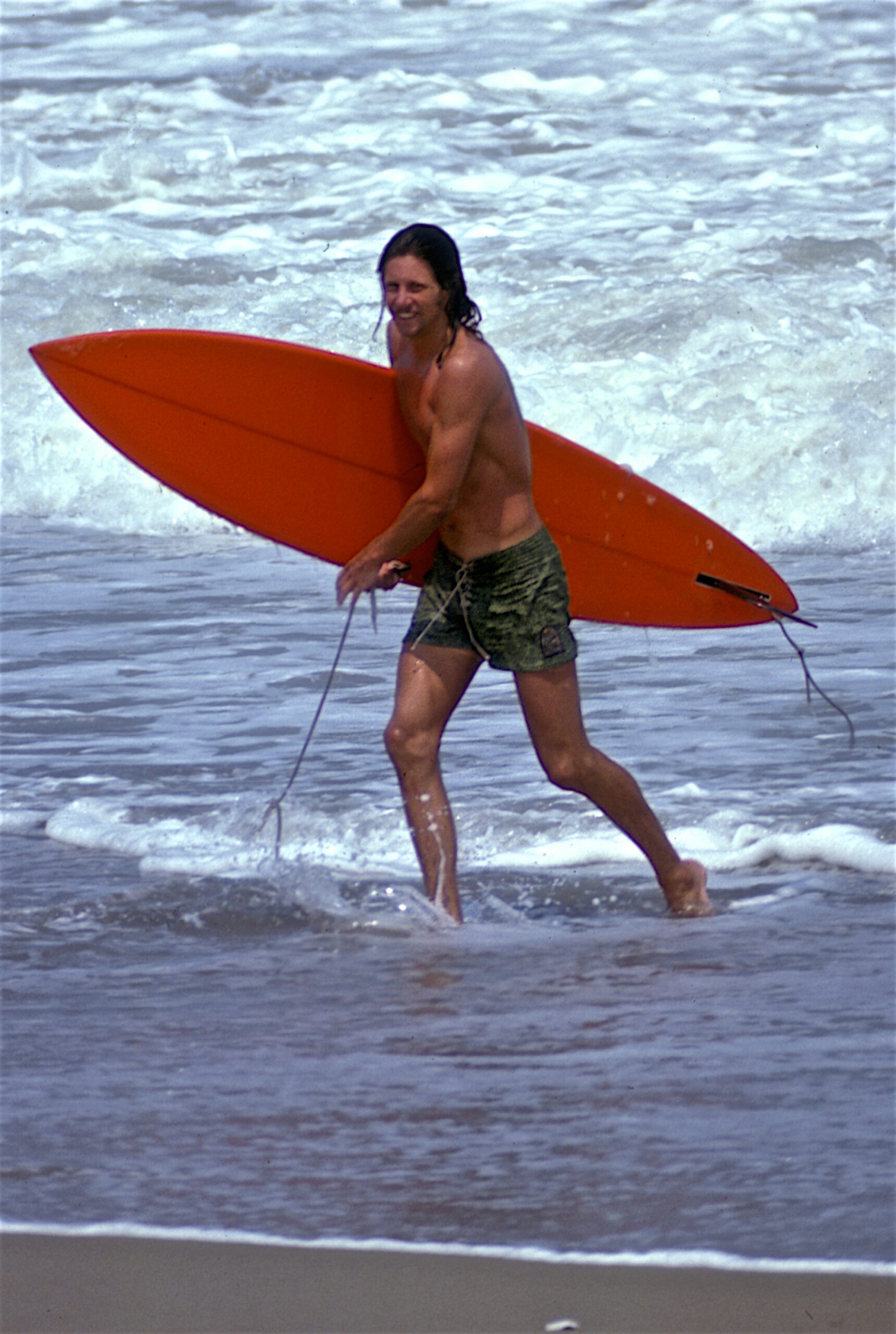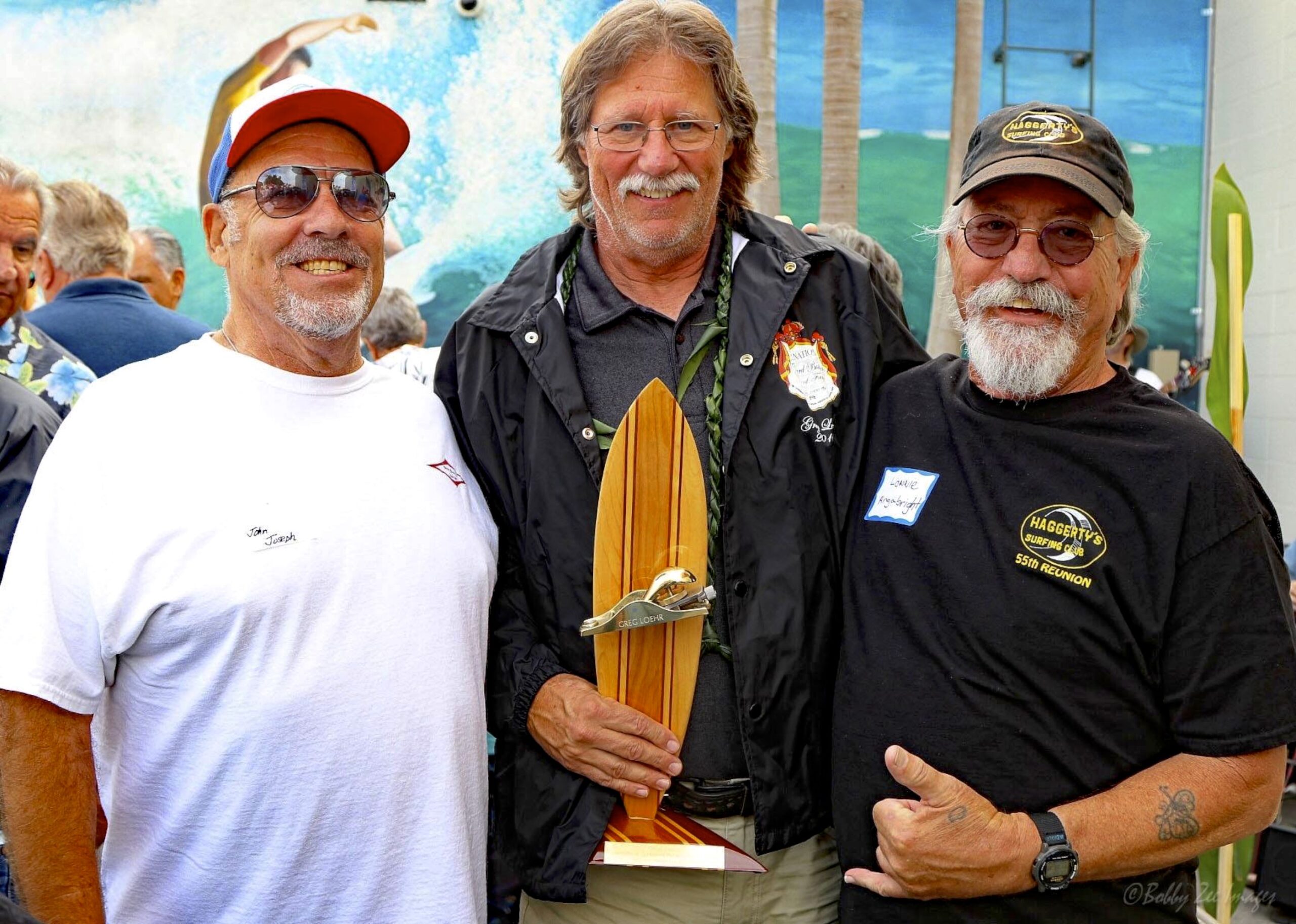Greg Loehr
Born in Brooklyn, New York in 1952, it would be years before Greg Loehr was able to sink his feet into the wax and find his true calling as one of the East Coast’s earliest, most promising surfers — and one of the sport’s most innovative board builders.
After leaving Brooklyn, Loehr’s family settled in Cocoa Beach, Florida, when Loehr was 12. Loehr was instantly hooked on surfing and quickly found success in Florida’s burgeoning surf contest circuit. By 1967, Mike Tabeling (Class of 1996) had signed Loehr to the much-lauded Weber Team, and he began to move up through the Junior ESA ranks. In the summer of 1969 Loehr’s family moved to St. Petersburg, Florida, which put the high school senior’s surfing on hold for a bit.
Greg spent the summer of 1970 in California, sleeping on the beach at WindanSea, making up for all that lost surf time in St. Pete. In 1971, he moved back to Florida, to Cocoa Beach, and continued surfing every chance he got. Riding for Oceanside Surfboards, he entered his first ESA contest in ’73 — and won his first 1A event. The next day, he won the 2A competition, which moved him to 3A, catching the attention of Gary Propper, who convinced Loehr to join the Hobie Team.
That same year, Loehr earned an invite to the inaugural ESA Championship in Cape Hatteras in the 4A division where he surfed against Propper, Tabeling, Bruce Valuzzi, Claude Codgen, Joe Roland, and other top surfers. Despite the fierce competition, Loehr managed second place, beaten by a very polished and sharp Charley Baldwin.
Loehr’s surfing was quickly noticed by Surfer Magazine photographers Larry Pope and Jana Frey, and he began appearing in editorial, as well as in Hobie and Katin ads, regularly. His big break came in an interview with Surfer, accompanied by a two-page centerspread photo in the magazine’s Photo Annual. Such attention was enough to get Loehr his signature Seaboard model, which he co-designed with legendary Hobie shaper Terry Martin. When Hobie began to focus more on its startup catamaran division, Loehr made a change to Dyno, teaming up with superstars David Nuuhiwa and Corky Carroll.
In early ’73, Loehr was back in Florida at the Tomb and Reeves surfboard factory in Melbourne, which also produced Dick Catri Surfboards. Loehr began riding and shaping for Catri. That same year, he flew to Hawaii for his first North Shore season and an introduction to the world stage. With invitations to the prestigious Smirnoff Pro and the Duke Classic, Loehr’s talent was also showcased at the famous barrels of the Banzai Pipeline, where he pulled off a stunning second reef tube ride that was considered by many to be that winter’s best ride.
The following summer, Loehr accepted the position of head shaper at Natural Art Surfboards. His surfing also continued to excel. At the 1974 ESA Championship, he won the prestigious Men’s Division. Then, he was back off to Hawaii, where he once again secured invites to the Duke and Smirnoff events, along with the inaugural Hang Ten contest. In this new era in pro surfing, Loehr found success globally, becoming the first East Coaster to win an international event, the 1979 Lacanau Pro in France.
Even with a soaring competitive career and a visible media presence, it was probably Loehr’s board building that has become his most significant contribution to the sport. By the end of the 70s and early 80s, he was making boards for 10 of the 12 top-ranked surfers on the East Coast. A 30-year career ensued, during which he shaped and designed surfboards for Natural Art, Ocean Avenue, Fox, and his own brand, Loehr Designs.
In 1981 Loehr also picked up windsurfing, as a competitor and board shaper/designer. As a windsurfing pro, Loehr won a handful of events, including the Sundek Pro and the RFC Speed Trials. He was also a race official for Professional Windsurfing Association World Tour events.
Designing sailboards, which are bigger and heavier than surfboards, prompted Loehr to employ a new European technique that used lightweight polystyrene foam for a board’s core. This dramatically reduced weight and led to an incredible improvement in performance. But the polystyrene core required the use of epoxy resins for the exterior laminate. Never one to shy away from the path least taken, Loehr began experimenting with epoxy, which in the 80s remained popular only with sailboard manufacturers.
He was soon the material’s biggest proponent in surfing, founding Resin Research, which continues to this day to be a leader in advancing surfboard construction. Today, every major surfboard builder in the world incorporates epoxy construction into their business models. Resin Research is an international corporation with distribution in Asia, Europe, South America, Australia, and North America. Such an innovative career led Surfing Magazine, in 2004, to name Loehr one of the “Top Ten Shapers of All Time,” as well as induction into the International Surfboard Builders Hall of Fame.
Loehr was inducted into the ECSHOF in 2000.
Photos by Rus Calisch, Alan Margolis, Dan Merkel, Dick “Mez” Meseroll, Larry Pope, Bruce Walker, and courtesy Greg Loehr, Full Force, Katin, Surfer House Wetsuits, and Surfer Magazine.
